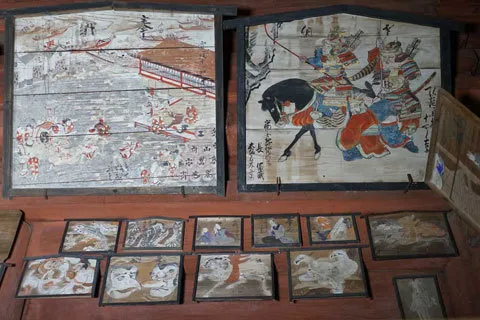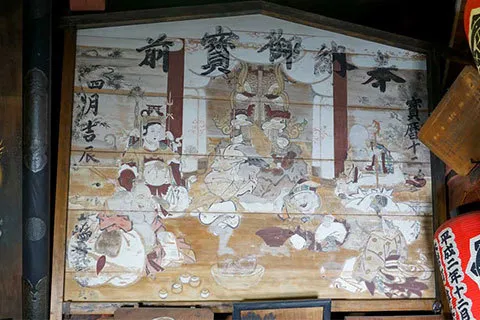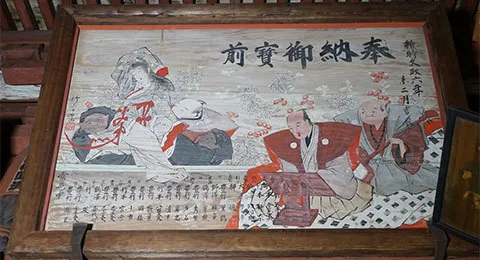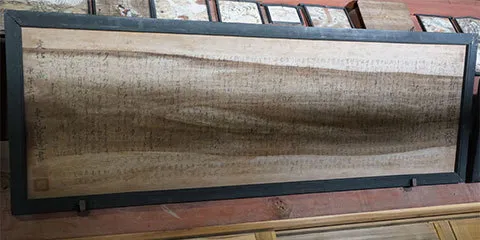Treasured ema, votive tablet
Guide to Ema and votive tablet of Oiwasan Bishamonten
印刷
共有
What is Ema?
印刷
共有
Oiwasan Bishamonten and Ema
印刷
共有

Ema and votive tablets: Designated cultural assets of Ashikaga City
印刷
共有
The oldest ema of Oiwasan Bishamonten
印刷
共有

Special valuable ema, votive tablets, etc.
Ceiling painting of the black dragon on the ceiling of the outer sanctuary of the main temple
印刷
共有

Entering the main temple of Oiwayama Bishamonten and looking up, you will see over 130 ema tablets. Looking further in, at the ceiling, you will see a huge black dragon painted all over the ceiling.
The picture of Ningyo-Joruri (Japanese puppet theatre in which recited narrative and dialog is accompanied by a shamisen)

"Ryugu Tadamori Zu" (Ema) using Western perspective drawing

Issa Kobayashi's haiku plaque (votive tablet)




Photo slideshow of ema and votive tablet of Oiwasan Bishamonten, a designated cultural property of Ashikaga City
Many ema and votive tablets are dedicated in the outer sanctuary of the main temple building of Oiwasan Tamonin Saishoji Temple, a.k.a. Oiwasan Bishamonten.